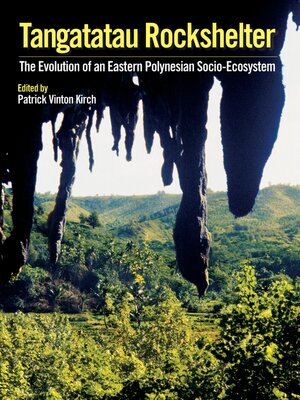Tangatatau Rockshelter
ebook ∣ The Evolution of an Eastern Polynesian Socio-Ecosystem · Monumenta Archaeologica
By Patrick Vinton Kirch

Sign up to save your library
With an OverDrive account, you can save your favorite libraries for at-a-glance information about availability. Find out more about OverDrive accounts.
Find this title in Libby, the library reading app by OverDrive.



Search for a digital library with this title
Title found at these libraries:
| Library Name | Distance |
|---|---|
| Loading... |
Tangatatau Rockshelter on Mangaia Island in the Southern Cook Islands, excavated by a multidisciplinary team in 1989-1991, produced one of the richest stratigraphic sequences of artifacts, faunal assemblages, and archaeobotanical materials in Eastern Polynesia. More than seventy radiocarbon dates provide a tight chronology from AD 1000 to European contact in about 1800. The faunal assemblage provides compelling evidence for dramatic reductions in indigenous bird life following Polynesian colonization, one of the best documented cases for human-induced impacts on island biota. Tangatatau is unique among Polynesian archaeological sites in the extent to which fishing was dominated by freshwater fishes and eels. The site also yielded an extensive suite of carbonized plant materials, including sweet potato tubers, demonstrating that this South American domesticate had reached Eastern Polynesia by AD 1400. Mangaia illustrates the often far-reaching consequences of human land use and resource exploitation on small and vulnerable islands.







